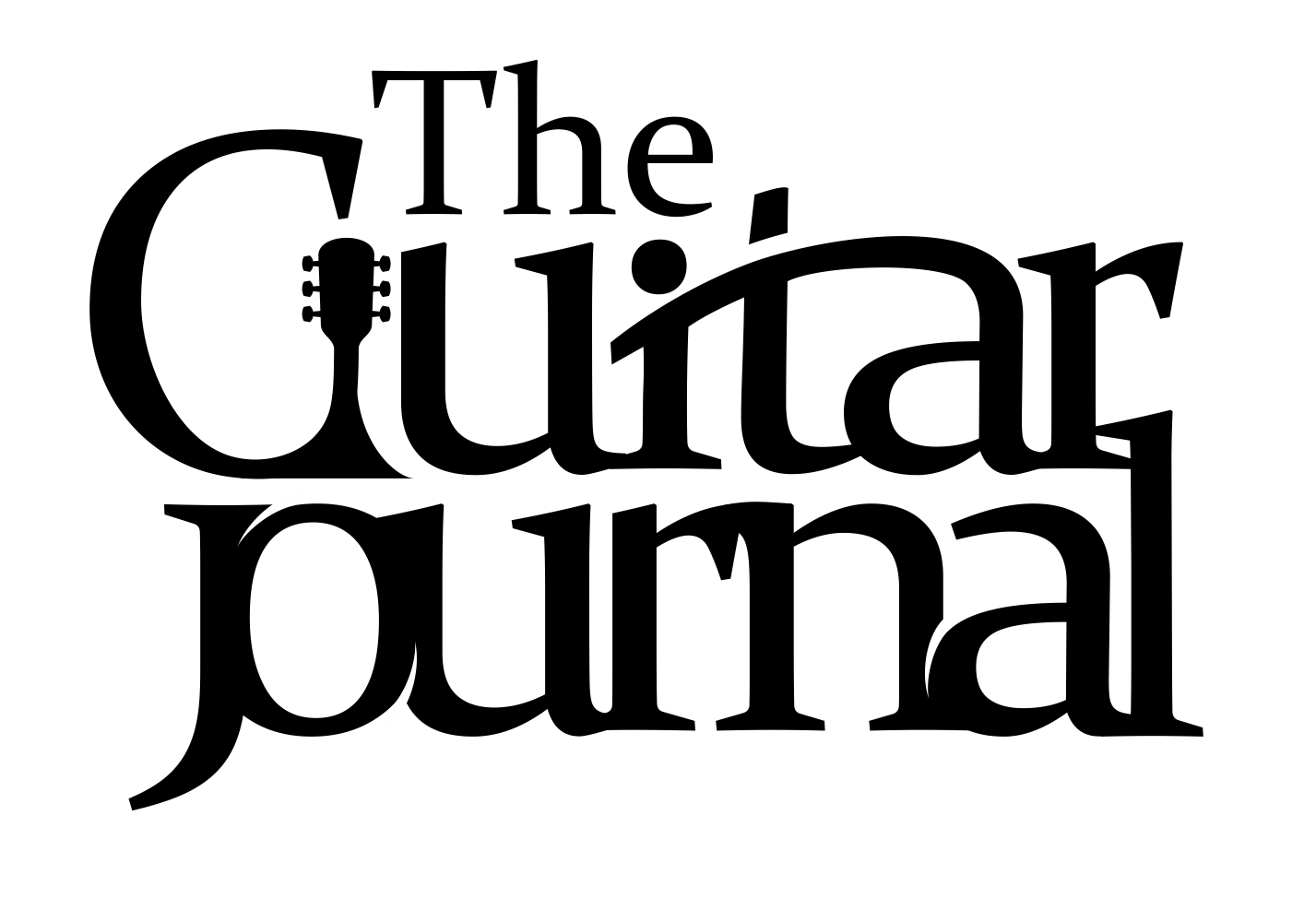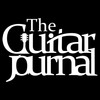An Introduction to Traditional Irish Guitar
Learn about traditional Irish guitar accompaniment – what it is, key techniques (like DADGAD tuning), influential players, and tips for playing Irish music on guitar.
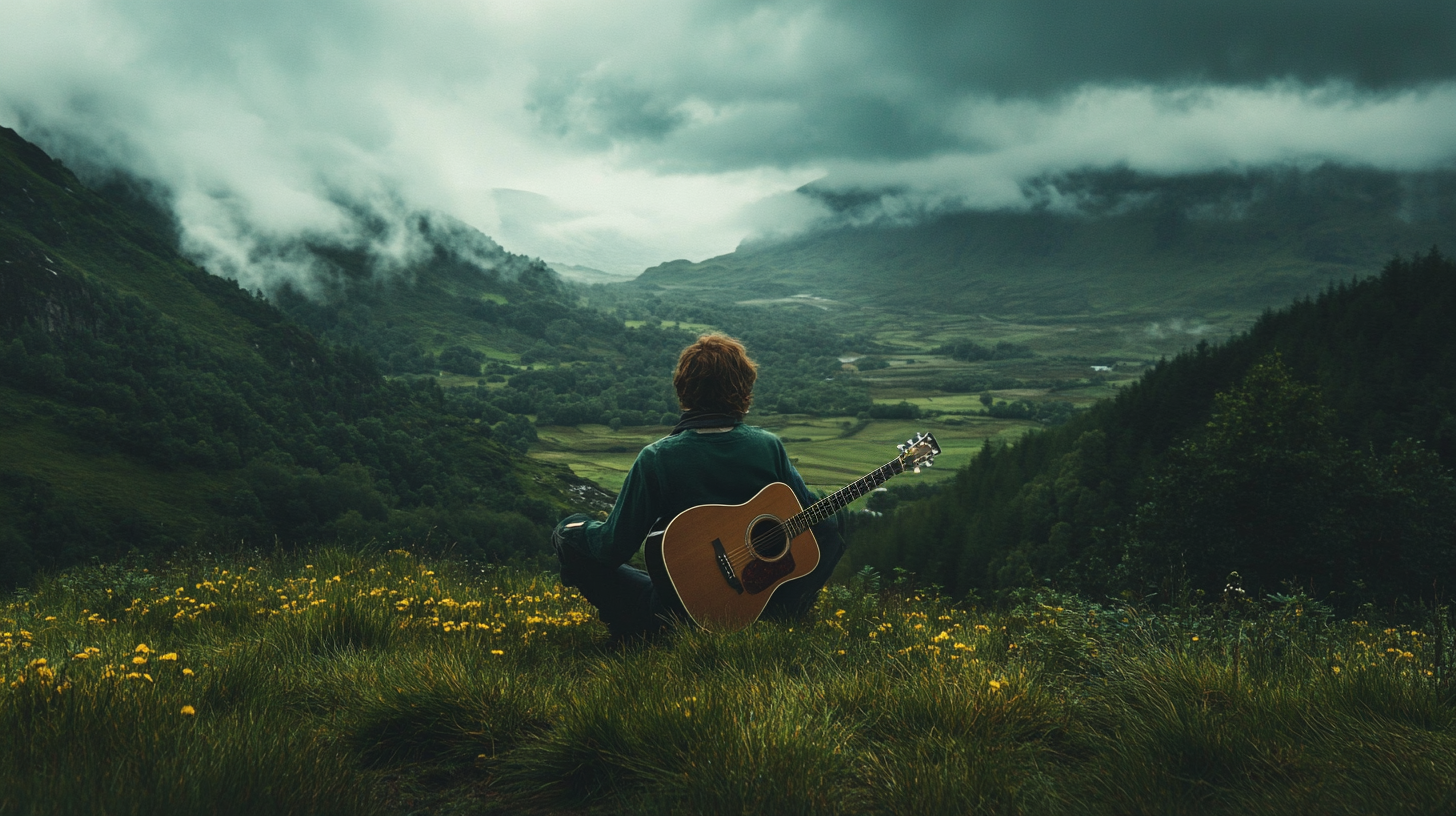
Traditional Irish music is famous for its fiddles, flutes, and pipes – but what about the guitar? Traditional Irish guitar refers to the style of guitar playing used to accompany Irish folk music (or “Trad music”). In this context, the guitar isn’t usually front-and-center playing the melody; instead, it provides the rhythmic and harmonic backbone for jigs, reels, and songs. This introduction will explain what Irish guitar is all about, highlight some key players and techniques, and offer tips on getting started. A world of lively tunes and unique guitar tricks awaits – let’s dive in!
The Role of Guitar in Irish Music
When we talk about “traditional Irish guitar,” we really mean guitar accompaniment in Irish traditional music. In Irish sessions (informal gatherings of musicians), melody instruments like the fiddle or flute carry the tune. The guitarist’s job is to support that melody – think of it as the canvas behind a painting. The guitar adds chords, rhythm, and texture to complement the lead players.
One thing newcomers quickly learn: melody is everything in Irish trad. If a guitarist strums too loudly or tries to riff over the fiddle tune, it’s like drowning out the lead singer – a major faux pas! Irish guitarists aim to enhance the tune, not steal the spotlight. This supporting role might sound limiting, but many find it liberating. You can experiment with interesting chords, alternate tunings, and subtle rhythms, all in service of the tune. The gratification comes from making the overall music sound great. As the saying goes among Irish accompanists, “if the fiddler’s smiling, you’re doing it right.” 😊
A Brief History
The guitar is actually a relative newcomer to Irish traditional music. Early on (mid-20th century), guitars weren’t common in session music – the accompaniment duties often fell to instruments like the piano or bouzouki. In the 1960s and 70s, during the folk revival, the guitar really found its footing in Irish music. Players like Mícheál Ó Domhnaill and Dáithí Sproule began using acoustic guitars to back Irish tunes, introducing new sounds and possibilities. By the late 20th century, the guitar had become a session staple.
One innovation that helped the guitar fit into Irish music was the use of alternate tunings. Standard tuning (EADGBE) works, but some pioneers felt it was too limiting for the droning, modal vibe of Irish tunes. DADGAD tuning (tuning the strings to D-A-D-G-A-D) became known as “Irish tuning.” It was popularized by players like Dáithí Sproule (who is credited as one of the first to use DADGAD in Irish accompaniment) and Pierre Bensusan in Celtic fingerstyle. DADGAD produces a ringing, open chord sound that suits jigs and reels beautifully, allowing for easy droning on D and A notes common in Irish music. Many Irish guitar accompanists today either use DADGAD or Drop D (where only the low E is tuned down to D) to get a fuller bass sound. Of course, plenty still use standard tuning as well – it really comes down to preference and style.
Traditional Irish Guitar Players to Know
One of the best ways to learn a style is by listening to the masters. Fortunately, Irish music has had some phenomenal guitarists paving the way. Here are a few iconic figures every Irish guitar enthusiast should know:
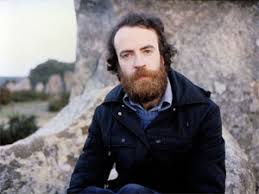
Mícheál Ó Domhnaill
As a member of the legendary 1970s group The Bothy Band, Ó Domhnaill brought guitar into the spotlight with strong, driving rhythms. He sometimes hit power-chord-like combinations that added a youthful energy to old tunes. Recommended listen: The Bothy Band’s recordings (hear how the guitar pumps life into jigs and reels).
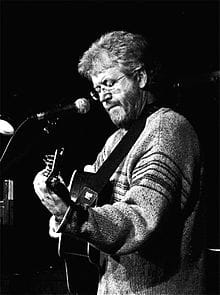
Dáithí Sproule
A pioneer of DADGAD tuning in Irish accompaniment, Sproule’s playing with the band Altan is a masterclass in tasteful backing. He shows how alternate tuning can create a rich harmonic backdrop without overshadowing the fiddle. Sproule’s style is steady and supportive – a backbone to the music. Recommended listen: Altan’s albums (focus on the guitar underpinning the fiddles and vocals).
Arty McGlynn
Often hailed as the godfather of Irish guitar accompaniment, Arty was one of the first to really popularize guitar in Trad. His strong, syncopated strumming (using a pick on steel strings) set new standards in the 1980s and 90s. Arty played with top Irish acts (Planxty, Patrick Street, Van Morrison, and more). He had a background in jazz and rock, which he infused subtly into his Irish playing, giving it superb drive. Recommended listen: Arty McGlynn’s solo album “McGlynn’s Fancy” or any recordings with Patrick Street.
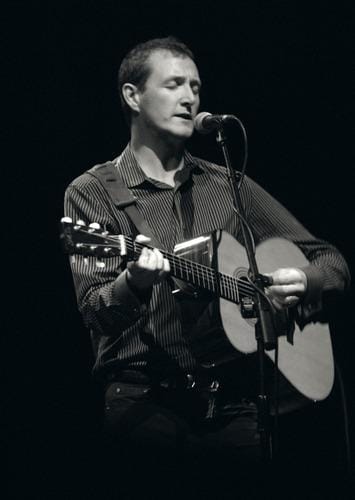
John Doyle
Rising to fame with the band Solas, John Doyle developed a highly influential accompaniment style. His rhythmic precision and inventive chord voicings often make listeners say “wow, who’s on guitar?” Doyle’s left-hand strength lets him use lots of sustain and ringing drone notes. He’s often copied but never exactly replicated. Recommended listen: Solas – “The Words That Remain” (for some classic Doyle backing).
Steve Cooney
An Australian-born guitarist who made Ireland his home, Cooney is known for revolutionizing rhythmic guitar in Irish music. He brought in funky backbeats, slap rhythms, and “impossible” chord runs that added power to the tunes. Many credit him with changing Irish guitar forever – from simple background strumming to an almost percussive art form. Recommended listen: Seán Ó Sé’s album where Cooney backs old-style singing with infectious guitar rhythms, or any live Cooney performance on YouTube for a jaw-dropping example of his technique.
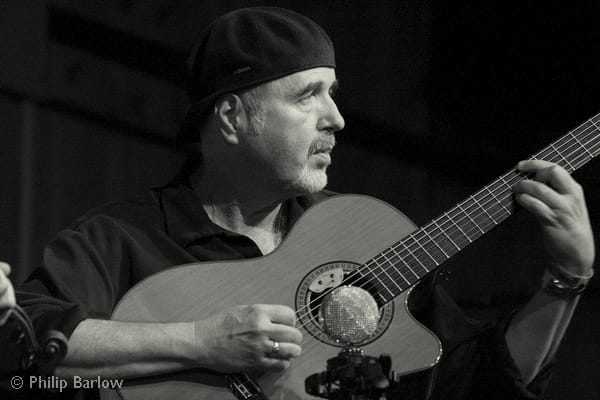
Dennis Cahill
Best known as the long-time guitar partner of fiddle maestro Martin Hayes. Cahill’s style is the definition of “less is more.” He often plays just a few notes or sparse chords, but in doing so he creates an elegant frame around the fiddle. His restraint and subtle timing are a lesson in how space can be as powerful as sound. NPR once praised Cahill for “delicate support… a rhythm that keeps the tune in, accents and colors but never overtakes” – perfectly describing his accompaniment. Recommended listen: Martin Hayes & Dennis Cahill – “Live in Seattle” (hear how Cahill leaves breathing room around Hayes’ fiddle lines).
(There are many more great players – but the above are a solid start. Honorable mentions: Tony McManus for Celtic fingerstyle, Paul Brady who did excellent early accompaniment, Ed Boyd of Lúnasa, and Jim Murray who often plays with Sharon Shannon.)
Melody Is Everything
When you sit down, guitar in hand, listening to Irish tune playing either via a musician friend or a recording, remember that it's all about that melody line - that's where the tradition lives. To encroach on that melody is the equivalent of drowning out the singer. It took me a minute, as someone who came from a rock/blues/jazz/punk/anything guitar background to realize I had no business vying for a piece of the spotlight. My role was a supporting one.
And after a while I realized that this "servile" role was actually the source of much liberation as a guitar player. I could go on and on about this and expand ad infinitum, but I have some ground to cover in this one blog post, so onward….
Tune Types: Jigs, Reels, and Beyond
Irish instrumental music is built on dance tunes. As an Irish guitar accompanist, you’ll encounter a variety of tune types, each with its own groove. Understanding these forms will help you decide how to accompany them on guitar.
Jigs
Jigs are in 6/8 time, with that “diddly-diddly” lilting feel. Counted as “1-2-3 4-5-6,” a basic jig rhythm might remind you of a horse’s canter. A guitarist typically strums jigs in a way that emphasizes beats 1 and 4 lightly, giving a bounce. One famous jig is “Out on the Ocean.” If you tap your foot to it, you’ll notice the triplet feel. On guitar, you might use a down-up-down, down-up-down strum pattern to capture the jig’s swing.
Reels
Reels are in 4/4 time, usually played quite fast with a steady stream of eighth notes. Think of reels as having a driving “1-and-2-and-3-and-4-and” feel. A well-known reel is “The Star of Munster.” For guitar, reels often mean a strong downbeat on 1 and 3, but with lots of subtle accents to propel the tune. Some guitarists use a boom-chick approach (bass note on the beat, chord on the offbeat) for reels, while others do full strums or even cross-picking patterns to outline the rhythm.
Hornpipes
These are similar to reels (4/4) but bouncier and often played slower, with a swing (“dotted”) feel. Hornpipes have a nautical, waltz-y vibe. Example: “Off to California.” Guitarists might chunk out hornpipes with a swung rhythm and often a bit of bass run between chords, since hornpipes invite a bit of groove.
Slip Jigs
A cousin of the jig, slip jigs are in 9/8 time (“1-2-3 4-5-6 7-8-9”). They feel more flowing. Example: “The Butterfly.” On guitar, they’re trickier due to the 9-beat pattern, but essentially you’d extend the jig pattern to fit 9/8, keeping a gentle lift.
Others
There are also polkas (fast 2/4 tunes, very popular in certain Irish regions – easy on guitar with an oom-pah feel), slides (similar to jigs but in 12/8, common in Kerry music), and more. Each has its unique pulse. A good rule is listen first – once you can hum or tap the rhythm of the tune, you can figure out a fitting guitar strum.
As a guitarist, you don’t need to know the intricate music theory behind these forms, but you do need to train your ear for their rhythms. A jig accompaniment won’t sound the same as a reel accompaniment. Part of the fun is learning those distinctions and varying your playing accordingly.
Tools of the Trade: Guitars, Tunings, and Techniques
What kind of guitar or setup do you need for Irish music? The great thing is you can use any acoustic guitar – there’s no special “Irish guitar” model. That said, here are some tips on gear and technique that many Irish guitarists find helpful:
Guitar Type
Most players use steel-string acoustic guitars. In the loud environment of a session (especially pub sessions), a guitar with good projection helps. Dreadnoughts (like a Martin D-28 or a Gibson J45) are popular for their volume and bass response. Some prefer smaller body guitars (OM, 000, etc.) for a more balanced tone. Notably, Lowden Guitars (made in Northern Ireland) have a great reputation in Irish music circles – they’re known for rich tone and sustain, albeit they are high-end. For those on a budget, guitars by brands like Yamaha or Blueridge can do a fine job; the key is a decent setup and warm tone.
Tunings
As mentioned, DADGAD tuning is almost synonymous with Irish accompaniment. It allows easy droning of D and A strings, which suits many tunes (since a lot of Irish tunes are in D or G major). DADGAD chords are more modal, neither major nor minor, which gives that ambiguous Celtic flavor. Drop D (DADGBE) is a simpler alternative that still beefs up the bass. Standard tuning works too – in fact, guitarist Dennis Cahill famously stuck to standard and used very sparse playing to great effect. If you’re just starting, you might begin in standard or Drop D (less to adjust mentally), and then experiment with DADGAD as you grow comfortable. There are many online resources and chord charts for DADGAD to help you get started.
Rhythm and Strumming
The rhythmic aspect is the heart of Irish guitar playing. A common mistake is to strum full-force on every beat – instead, think of yourself almost like a drummer. Accentuate certain beats and mute or lighten others. For example, in reels, you might do a strong downstroke on beat 1, a ghosted (very light) strum on 2, strong on 3, light on 4, etc. Many Irish guitarists use palm muting intermittently to emphasize rhythm (creating that chunky “thump” on the lower strings). Syncopation – accenting off-beats or using backbeats – can add drive (Steve Cooney is a master of this).
Bass Runs and Inversions
Unlike in pop/rock, you won’t be changing chords every bar in some Irish tunes – often one chord (say, D) can last several measures, especially in a modal tune. To keep things interesting, guitarists use bass runs (walking the bass note to connect to the next chord or just to follow the tune’s movement) and chord inversions (playing a different bass note than the root). For instance, if a tune goes from G to Em, you might play a G chord, then an Em7/B (which is basically an Em chord with B in the bass) to smoothly lead into an actual Em. This kind of voice leading is a hallmark of sophisticated Irish accompaniment.
Dynamics
Trad music, especially in sessions, can get loud and boisterous, but it also has its quiet moments (like a solo air or a sparse arrangement). A good accompanist knows when to dial it back. If a flute player decides to play a haunting slow air, it might be a time to not play at all (or just lightly pick a few chords once in a while). And when the full set of reels kicks in, you can dig in a bit more. Listen and adapt – that’s the mantra.
Tech Tip: If you’re playing in pub sessions frequently, consider using moderately heavy gauge strings (e.g., .012s or .013s) for a fuller sound and carry. Many Irish accompanists also use a pickup in their guitar if performing (to be heard over fiddles/accordions), but for pure acoustic sessions, it’s just you and the guitar – no amp, which is why technique and guitar choice matter.
Learning Traditional Irish Guitar – Getting Started
So, how can you start your journey in Irish guitar? Here are a few tips and resources to point you in the right direction:
Listen to Lots of Irish Music
It all begins with the ear. Spend time listening to classic recordings – The Bothy Band, Planxty, Altan, Lúnasa, Martin Hayes & Dennis Cahill, etc. Pay attention specifically to the guitar if it’s audible. You’ll start to internalize the rhythms and chord progressions commonly used. Even listening to non-guitar tracks helps; you learn the tunes themselves, which is crucial (since you must follow the melody’s twists when choosing chords).
Start with Simple Tunes
Grab a recording of an easy reel or jig (say, “The Kesh Jig” or “Drowsy Maggie”). Try to play along using basic chords. Even just strumming D and G chords in time with the music is a fine start if the tune is in D major. Don’t worry about fancy stuff initially – focus on staying in rhythm and changing chords at the right times (usually when the tune’s chord implies a change).
Learn DADGAD or Drop D Early
It might sound daunting to use an alternate tuning, but many beginners actually find DADGAD fun because two-finger chords can sound great. There are tutorial books (like “DADGAD Guitar Basics”) and YouTube lessons specifically on DADGAD for Irish music. Even if you stay in standard tuning, tune that low E to D whenever you play a tune in D major – your guitar will instantly sound more “Irish” with that low drone.
Rhythm First, Embellishments Later
Focus on steady rhythm before trying any complex runs or syncopations. A tight, steady chop on guitar is gold in Irish music. You can add the fancy ornaments (triplets, percussion slaps, etc.) as you become comfortable. It’s better to be solid than overly elaborate and sloppy. Practicing with a metronome or tapping your foot is helpful, because Irish tunes can speed up unintentionally!
Attend a Local Session or Find Friends
If possible, go to local Irish sessions (many cities have them weekly). At first, you might just listen or quietly strum along. It’s a fantastic way to learn repertoire and etiquette. You’ll also meet other musicians – perhaps another guitarist who can show you the ropes. Session etiquette tip: usually only one guitarist plays at a time in a session to avoid a muddy sound, so be patient and swap in when it’s your turn. And always play softly enough to hear the melody players.
Online Resources and Teachers
There are great online communities and lessons out there. The Online Academy of Irish Music (OAIM) has guitar courses. YouTube has lessons by people like Paul Brady, Tony McManus, and others demonstrating accompaniment techniques. If you prefer one-on-one, seek out instructors like Jimmy Murray (Ireland) or Dave Curley, who are known for teaching Irish guitar – some offer Skype lessons. Even a few lessons can jumpstart your progress.
Remember, learning Irish guitar is a journey – much like the author of this article (Patsy) mentioned from his own experience. It’s a balance of respecting the tradition (listening and integrating with the group) and finding your own voice. Give it time, enjoy the small victories (the first time you nail a tricky rhythm, it’s magic!), and don’t be afraid of the occasional misstep. Even seasoned players hit a wrong chord when a fiddler throws in a surprise tune variation. 😅
Irish Guitar for Songs (Pub Songs and Ballads)
Up to now, we’ve focused on instrumental music – jigs, reels, etc., which are often played in sessions. But the guitar also has a big role in Irish songs and ballads. If you’ve ever been to an Irish pub, you’ve likely heard folks belting out “Whiskey in the Jar” or “The Wild Rover” with guitar accompaniment. This is a different facet of Irish guitar: backing sing-alongs and ballads.
In pub songs, the guitar often takes on a simpler strumming role, because the focus is on singing and lyrics. Many of these songs use only a handful of chords (indeed, some jest that you can play 90% of pub songs with G, C, D, and maybe Em!). The goal here is to keep a steady rhythm and encourage audience participation. Think of the guitar as the campfire song facilitator – strong downbeats, easy chord progressions, maybe a lifting key change for the final chorus to really get people roaring. 🎸
One humorous take from the author’s own days performing in Dublin: he recalls a friend jokingly singing, “I have plundered Irish music with a lump of German plywood and a capo – I have learned the songs with just two chords and disregard the rest!” – a playful nod to how basic some pub song guitar-ing can be. While that’s an exaggeration, it’s true that you don’t need fancy chords to get an Irish crowd singing. The soul you put into it matters more.
For those interested in this side of Irish guitar, The Dubliners are a great example to emulate (check out videos of their guitarist backing rambunctious pub songs). Also, contemporary artists like Damien Rice (though more modern-folk, he often just strums open chords on emotional songs) show how impactful simple accompaniment can be.
In summary, accompanying Irish songs is about atmosphere – you support the singer, maintain a foot-tapping beat, and occasionally throw in a flourish between verses. It’s less technical than tune accompaniment, but equally rewarding when you get a whole pub singing along. And yes, knowing how to use a capo is handy – many singers will ask to change key, and a capo lets you keep those easy chord shapes in a new key.
Choosing the Best Guitar for Irish Trad (Gear Spotlight)
If you’re serious about diving into Irish guitar, you might wonder: what’s the best guitar to use? The honest answer is “whichever acoustic guitar you feel comfortable with.” But here are a few considerations that make some guitars shine in this genre:
- Tonewoods: Guitars with spruce tops and mahogany or rosewood backs are common. Spruce top gives clarity and volume (good for cutting through a session), while mahogany can give a warm, focused sound (great for rhythm definition) and rosewood provides rich overtones (nice for DADGAD drones). For instance, a Martin D-18 (spruce/mahogany) offers a punchy rhythm sound, whereas a Martin D-28 (spruce/rosewood) has a booming bass – either can work, it’s preference.
- Body Size: Larger bodies (dreadnought, jumbo) = more bass and volume, which help in group settings. Many Irish accompanists favor dreadnoughts for that reason. However, some use OM or 000 size (which are smaller) for a more balanced sound that doesn’t overpower. If you play solo a lot (just you and a fiddler, for example), a smaller guitar might blend better. In a noisy pub, a dreadnought gives you more headroom to be heard when needed.
- Action and Setup: If you plan to do alternate tunings, make sure your guitar’s setup can handle it. DADGAD exerts a bit less tension than standard, so usually it’s fine. If you go down to C or lower tunings (some extreme players do CGCGCD or others), you might want slightly heavier strings to avoid floppiness. A good setup (maybe slightly higher action if you primarily strum hard, to avoid fret buzz) can make a difference in how clean your chords sound when you’re really digging in.
- Notable Brands: We mentioned Lowden Guitars – they are somewhat legendary in Irish music. Lowdens (and related makers like Avalon or George Lowden’s newer label Sheeran by Lowden) often have a sweet, sustaining tone and are favored by pros (Pierre Bensusan, for one, though he’s more Breton/French trad, uses Lowdens). Martin and Gibson acoustics are widely used too (many Irish musicians love the Martin D series, and the Gibson J-45 is beloved for song accompaniment). Taylor guitars, known for brightness, might cut through well in sessions as well. And if you’re on a budget, a Yamaha FG series or Seagull S6 can be excellent starter guitars that sound good for strumming and won’t break the bank or cause heartbreak if someone spills Guinness on it at the pub!
Ultimately, the “best” guitar is subjective. It’s worth trying a bunch (if you have access to a well-stocked music shop) to see which one’s sound and feel you love. If it inspires you to play more, it’s the right choice.
(Fun fact: Some Irish guitarists even use nylon-string guitars (classical guitars) for accompaniment – for example, Jimmy Murray often plays a nylon-string to get a very smooth, mellow backing sound. So rules are meant to be broken!)
Frequently Asked Questions (FAQ)
Q: What is Irish guitar tuning?
A: “Irish guitar tuning” often refers to DADGAD tuning. DADGAD is widely used in Irish traditional guitar because it provides a droning, modal sound that fits the music’s tonality. In DADGAD, the strings are tuned (low to high) D – A – D – G – A – D. It’s not mandatory to use this tuning; many tunes can be accompanied in standard tuning or Drop D. However, DADGAD has become popular enough that it’s sometimes nicknamed “the Irish tuning.”
Q: Can I play Irish traditional music on guitar?
A: Absolutely! While the guitar isn’t a lead melody instrument in trad music (the fast reels and jigs are typically played on fiddle, flute, accordion, etc.), the guitar is commonly used to accompany those tunes. It’s welcome in most sessions, as long as you play tastefully. Also, for Irish folk songs and ballads, guitar is often the primary accompaniment instrument. So whether it’s backing up a dance tune or strumming along to “Danny Boy,” the guitar has a firm place in Irish music.
Q: Who are the best Irish guitar players I should listen to?
A: There are many great players (see the list above in the article for details). To recap a few must-listen names: Arty McGlynn (pioneer of modern Irish accompaniment), John Doyle (renowned for his driving rhythm), Steve Cooney (innovator of powerful percussive style), Dennis Cahill (master of subtle backing), Mícheál Ó Domhnaill (Bothy Band legend), and Dáithí Sproule (DADGAD pioneer). Each has a different style – listening to them will give you a rich sense of what Irish guitar can be.
Q: What are some easy Irish songs or tunes to start with on guitar?
A: For songs: try three-chord classics like “Wild Mountain Thyme” (G, C, D), “The Wild Rover” (G, D, Am, C), or “Whiskey in the Jar” (Am, G, Em – depending on version). These are straightforward and popular. For tunes: as a guitarist, it’s good to start with something in D major or G major since the chords are friendly. “The Kesh Jig” (G major) is a common beginner jig – you can accompany it with just G and D chords (and maybe C). “Drowsy Maggie” (E minor reel) is a famous reel – you’d use chords like Em, D, G, maybe C. Start slow and get the feel; even looping one chord in rhythm with the tune is fine at first.
Q: How do I know what chords to play for a tune?
A: This comes with practice and ear training. A general method: figure out the key of the tune first (many Irish tunes are in D, G, A, or related modes). The key will give you common chords to use (the I, IV, V chords – e.g., in D major, that’s D, G, A). Listen for where the tune seems to resolve – that’s often the I chord. As the tune plays, try to match bass notes to it; if a part of the melody gravitates around a G note, the chord might be G (or E minor, etc.). Over time, you’ll recognize patterns – certain phrases nearly always take certain chords. There are also resources like tunebooks or websites that have suggested chords for common session tunes, which can be a helpful starting point. Ultimately, your ear is the guide – and remember, in Irish trad, there’s often more than one correct way to harmonize a tune, so chords aren’t set in stone.
Bottom Line
If you’ve never considered turning your guitar talents toward Irish music, you’re in for a treat. It’s a genre where the guitar may not always seize the spotlight, but it certainly brings the heartbeat to the music. From the exhilarating lift of a reel to the soulful sway of a ballad, Irish guitar playing will challenge and reward you in equal measure. So grab your guitar, give those old jigs and reels a listen, and strum along – a whole new world of music awaits, and it’s one heck of a fun journey. Go n-éirí an bóthar leat! (May the road rise with you – an Irish saying to wish you good luck on your journey.)
About the Author
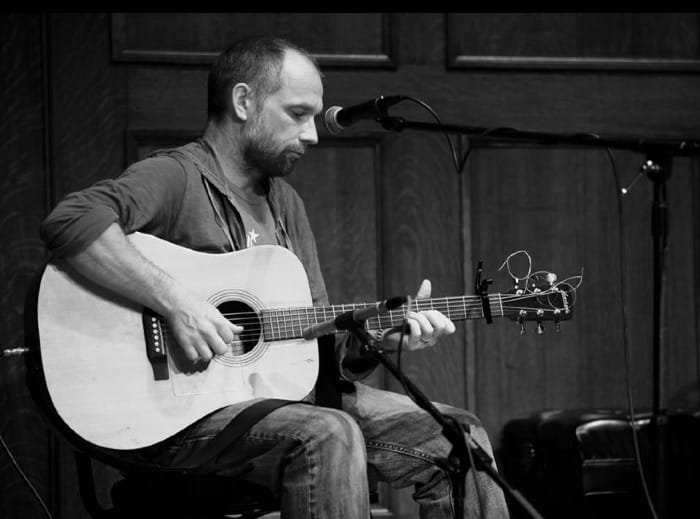
Hailing from Cork in the south of Ireland, Patsy O'Brien has traveled the globe, guitar in hand, accompanying, creating and recording with some of the giants of Irish music.
An award-winning songwriter and much sought-after guitarist, his ability to meld songwriting and guitar styles seamlessly caught the attention of NPR who featured his arrangement of The Star Of The County Down (see below) on their All Songs Considered program.
For more info, visit his website, or follow him on Facebook and Instagram.
